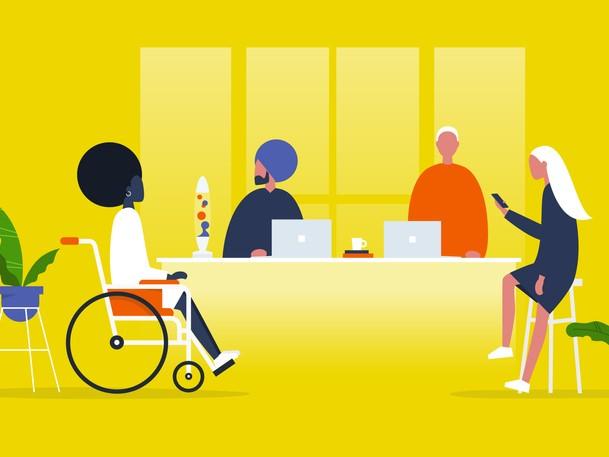The pandemic has been responsible for a great many things, including the exposure of something endemic in higher education: learner variability. This is not new. Institutes of higher education have long ignored or paid lip service to the fact that students come from multiple ethnic and cultural backgrounds, that they have differing needs, abilities, disabilities and constraints.
Now we’ve had it laid bare, perhaps more than ever before, that students are studying while holding down (often precarious) jobs, caring for family members and dealing with their own physical and mental health issues. Yet many Western schools still seem to cater to a mythical “average” student that is rarely spotted in the wilds of academe: emotionally well supported, financially stable, speaks English as a first language, has an abundance of independence, energy, resources and, perhaps most importantly, time to lavish on their own education.
The university system is built on these kinds of students, reflecting a perceived culture that values and promotes independence in which prospective students would be able to leave home and direct all their time, energy and resources to this singular endeavour. But many students come from integrated cultural backgrounds in which family and community are valued over the individual, and this puts the traditional educational system in opposition to one’s lived experience and worldview.
As such, the forced shift to online education was in fact a great windfall for many students, who found the flexibility it brought to be life-changing. Education, suddenly, became much more accessible.
And, to top it off, universities had to take notice because it hurt their bottom line if they weren’t accessible and accommodating to this new reality. By offering flexibility in the times and ways students could take classes, universities could maintain or even increase enrolments.
In addition to cultural variability among students, differences in areas such as preparedness, language and disability status also require flexibility in learning environments.
Universal design for learning (UDL) is not only built on the premise that all learners differ, it values that variability and sees those differences as a positive rather than a deficiency that must be overcome. UDL leverages the variety of learners to create a more engaging and successful learning environment for all, and so provide greater flexibility and more opportunities for success.
The three central tenets of UDL are to provide multiple means of engagement, representation and action and expression. Basically, it means that students have choices.
Multiple means of engagement could mean a completely new digitally formatted syllabus (such as a Liquid Syllabus) that premises the fully digital workspace that the course inhabits − rather than moving the Word document or PDF of the syllabus into an online space as an afterthought. Or it could mean student-created working groups during times that are convenient for students. Or completely asynchronous forms of communication such as a Discord server or messaging app for student interaction that maximises the digital nature of the course. Add to this the opportunity to annotate the syllabus together and allow students to create their own goals for the course and to vary activities so they are culturally relevant for the variety of learners present and allow them to bring their whole, authentic selves to the learning environment.
Multiple means of representation concerns access, which is essential in online environments. Instructors provide lectures with transcripts or closed captions so students can watch, listen and/or read the information needed. This also means providing flexibility for students to vary the delivery speed for these videos, so they can slow down or speed up the content depending on need.
My daughter was hugely frustrated by the inability to do so for her biology lectures this past semester. In her case, the lectures were too slow and she had difficulty paying attention as her processing speed did not match the delivery speed. But this is a simple fix in online environments. Instructors can upload recorded lectures to YouTube or a similar platform that allows user flexibility. That way, students who need to slow down a lecture, or repeat it, can do so, while those who wish to speed it up to stay engaged have that option as well.
Keeping that lens of learner variability in mind benefits students with auditory or visual disabilities, English-language learners, parents who may need to listen to a lecture while rocking a child to sleep, students commuting to school or work, and any number of others who do not fit the “traditional” model.
UDL also recommends providing options for action and expression to account for the diversity of learners. This essentially translates as freedom of choice in whether to complete assignments through written, video or audio means in an asynchronous online learning environment, plus providing a choice of resources that are culturally relevant and flexible.
I have seen how this approach provides a lens through which instructors can not only design for diversity but leverage that diversity to benefit all learners by creating a flexible learning environment that gives every student the best possible opportunity to succeed.
After all, the more choice we give students, the more motivated they will be to succeed and the more they will see how applicable their learning is to their own lives. It helps their education become meaningful rather than just a box to tick so they can move on.
Lillian Nave is a senior lecturer and UDL coordinator at Appalachian State University in Boone, North Carolina, US.




comment2
(No subject)
(No subject)